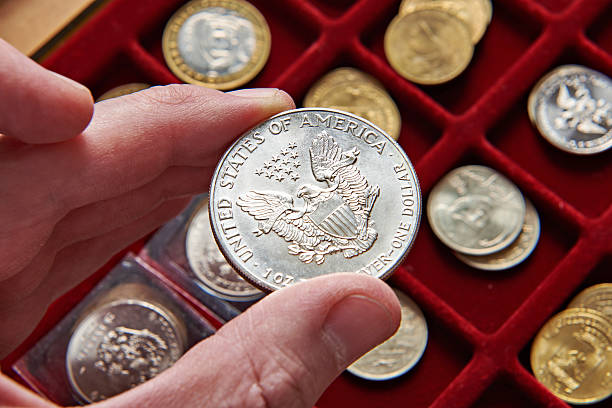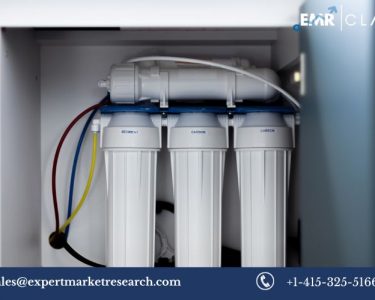The global landscape has undergone a seismic shift in the wake of the COVID-19 pandemic. From economic upheavals to societal transformations, the repercussions are profound and far-reaching. In the realm of investing, uncertainty has become the new norm, prompting investors to seek refuge in assets that offer stability and resilience. One such asset class that has been gaining significant momentum in the post-pandemic era is precious metals. In this blog, we delve into the reasons behind the surge in interest in precious metals as a haven for investors navigating through turbulent times.
Understanding the Post-Pandemic Investment Landscape
As the world grapples with the aftermath of a global health crisis, investors are faced with a myriad of challenges and uncertainties. The pandemic has exposed vulnerabilities in traditional investment avenues, leading to a renewed emphasis on diversification and risk management. Volatility in the stock markets, fluctuating currencies, and unprecedented levels of government intervention have fueled apprehensions among investors, driving them to seek alternative assets that can safeguard their wealth.
The Allure of Precious Metals in Times of Crisis
In times of economic distress and uncertainty, precious metals have historically emerged as safe-haven assets prized for their intrinsic value and tangible nature. Gold, silver, platinum, and palladium have long been revered as stores of wealth, serving as a hedge against inflation, currency devaluation, and geopolitical turmoil. Unlike fiat currencies, whose value is subject to manipulation and erosion, precious metals possess inherent scarcity and enduring demand, making them resilient in the face of market fluctuations.
Factors Driving the Surge in Precious Metal Investments
Several factors have contributed to the growing appeal of precious metals in the post-pandemic investment landscape. Firstly, the unprecedented monetary stimulus measures implemented by central banks worldwide have raised concerns about the long-term sustainability of fiat currencies, prompting investors to seek refuge in hard assets like gold and silver. Additionally, the resurgence of inflationary pressures amid massive government spending has bolstered the case for precious metals as an effective hedge against purchasing power erosion.
Furthermore, geopolitical tensions, trade disputes, and geopolitical tensions have heightened market uncertainties, driving investors to allocate a portion of their portfolios to assets with intrinsic value and universal acceptance. The proliferation of financial innovations, such as exchange traded funds (ETFs) and digital gold platforms, has also democratized access to precious metals, making them more accessible to retail investors seeking to diversify their holdings.
The Role of Precious Metals in Portfolio Diversification
Incorporating precious metals into an investment portfolio can enhance diversification and mitigate downside risks during periods of market turbulence. Unlike conventional assets like stocks and bonds, which are susceptible to systemic risks and correlation patterns, precious metals exhibit low correlation to traditional financial instruments, making them effective diversifiers. By allocating a portion of their assets to precious metals, investors can achieve a more balanced and resilient portfolio that is better equipped to weather volatile market conditions.
Performance Comparison with Traditional Assets
An examination of the performance of precious metals relative to traditional assets provides further insight into their appeal in the post-pandemic investment landscape. During periods of market distress and economic uncertainty, precious metals have often outperformed equities and bonds, delivering robust returns and preserving capital. For instance, historical data reveals that gold has exhibited strong performance during times of crisis, serving as a reliable hedge against systemic risks and currency devaluation.
Moreover, the correlation analysis between precious metals and other asset classes highlights their diversification benefits. While stocks and bonds may experience simultaneous downturns during market downturns, precious metals tend to exhibit low or negative correlations with traditional financial instruments, making them valuable portfolio diversifiers. By incorporating precious metals into a diversified investment portfolio, investors can reduce overall portfolio volatility and enhance risk-adjusted returns over the long term.
Emerging Trends and Innovations in Precious Metal Investing
The post-pandemic era has witnessed the emergence of new trends and innovations in the precious metal investment landscape, reflecting changing investor preferences and market dynamics. One notable trend is the growing popularity of sustainable and ethical investing practices, which prioritize environmental, social, and governance (ESG) considerations. In response to the increasing demand for ethically sourced metals, companies and investors are exploring sustainable mining practices and responsible supply chain management. Investing in silver, often considered a more accessible and affordable alternative to gold, has also gained traction among investors seeking diversification and potential upside opportunities in the precious metals market.
Furthermore, advancements in financial technology (FinTech) have facilitated greater accessibility and liquidity in the precious metal market. Digital gold platforms and blockchain-based solutions have democratized access to precious metals, allowing investors to purchase, trade, and store bullion efficiently and securely. Moreover, the rise of gold-backed cryptocurrencies and tokenized assets has blurred the boundaries between traditional and digital forms of wealth, offering investors innovative avenues for diversification and wealth preservation.
Regulatory Considerations and Risks
While precious metals offer compelling benefits as investment assets, investors need to be mindful of regulatory considerations and inherent risks associated with this asset class. Government regulations, taxation policies, and geopolitical developments can impact the supply, demand, and pricing of precious metals, influencing investment outcomes. Additionally, fluctuations in commodity prices, market liquidity, and storage costs may pose challenges for investors seeking to maintain exposure to precious metals.
Moreover, investors should be aware of counterparty risks associated with certain investment vehicles, such as ETFs and derivative contracts, which may not provide direct ownership of physical bullion. Conducting thorough due diligence and consulting with financial professionals can help investors navigate regulatory complexities and mitigate risks associated with precious metal investments effectively.
Conclusion
In conclusion, the appeal of precious metals as investment assets has only strengthened in the post-pandemic era, driven by a confluence of factors including economic uncertainty, monetary stimulus measures, and changing investor preferences. With their time-tested qualities, diversification benefits, and resilience to market volatility, precious metals occupy a prominent place in the modern investment landscape.
However, investors should approach precious metal investing with caution, considering regulatory considerations, inherent risks, and evolving market dynamics. By incorporating precious metals into a well-diversified investment portfolio and staying informed about emerging trends and innovations, investors can harness the potential of these timeless assets to preserve wealth and navigate through the complexities of the post-pandemic world. As we embark on this journey of uncertainty and transformation, the allure of precious metals remains steadfast, offering a beacon of stability and resilience amidst the evolving landscape of global finance and investing.






